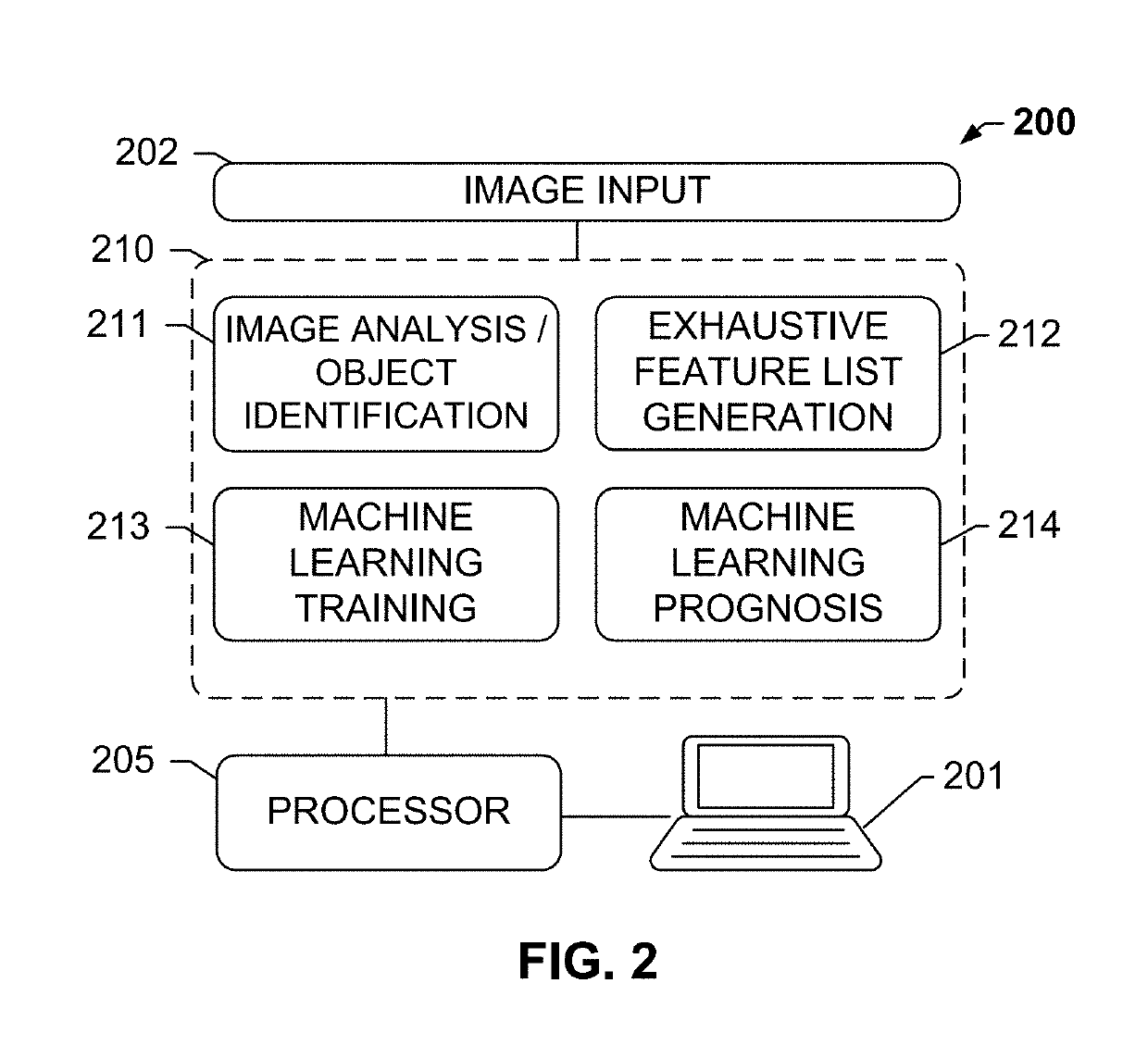Assessing risk of breast cancer recurrence
a breast cancer and risk assessment technology, applied in the field of computerimplemented methods and/or digital pathology enabled machine learning systems, to achieve the effect of reducing unnecessary hardship and avoiding adverse side effects
- Summary
- Abstract
- Description
- Claims
- Application Information
AI Technical Summary
Benefits of technology
Problems solved by technology
Method used
Image
Examples
Embodiment Construction
[0034]Systems and methods disclosed herein relate to determining the risk of cancer recurrence. A classifier, such as a machine learning module, may be trained using a holistic integration of large amounts of prognostic feature information for one or more patients into a single comparative prognostic dataset. The large amounts of information may be analyzed from H&E and commonly used immunohistochemistry (IHC) slides, as well as other IHC slides such as immune panel slides, etc. A risk classification system may be trained using the large amounts of information from a cohort of training slides from several patients, along with clinical and survival data for said patients. For example, a machine-learning-based binary classifier in the risk classification system may be trained using a set of image features computed from a plurality of slides corresponding to several cancer patients whose clinical diagnostic and survival information is known and input into the system. The set of image f...
PUM
| Property | Measurement | Unit |
|---|---|---|
| thickness | aaaaa | aaaaa |
| thickness | aaaaa | aaaaa |
| time period | aaaaa | aaaaa |
Abstract
Description
Claims
Application Information
 Login to View More
Login to View More - R&D
- Intellectual Property
- Life Sciences
- Materials
- Tech Scout
- Unparalleled Data Quality
- Higher Quality Content
- 60% Fewer Hallucinations
Browse by: Latest US Patents, China's latest patents, Technical Efficacy Thesaurus, Application Domain, Technology Topic, Popular Technical Reports.
© 2025 PatSnap. All rights reserved.Legal|Privacy policy|Modern Slavery Act Transparency Statement|Sitemap|About US| Contact US: help@patsnap.com



